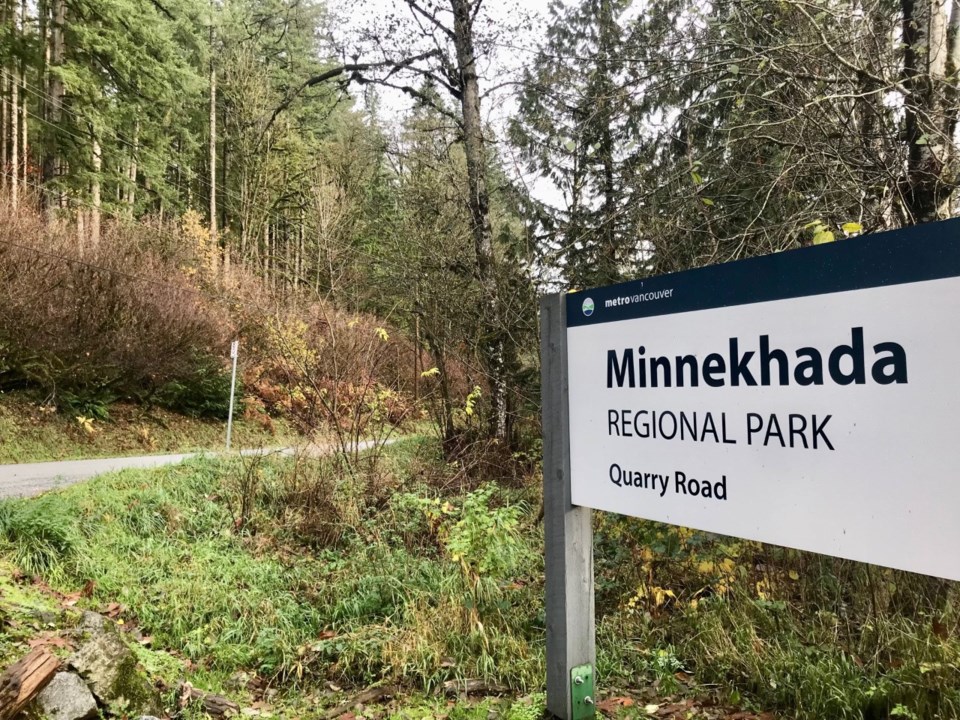A paved road to a new regional park at the eastern end of Burke Mountain in Coquitlam is on the city’s books for major capital projects starting next year.
Municipal staff are earmarking $8.5 million in the draft 2022 budget — set for adoption in December — to update the gravel portion of Quarry Road from Gilley’s Trail before Metro Vancouver opens Widgeon Marsh Regional Park in 2023.
Tyler Kuny, Coquitlam’s transportation infrastructure manager, told the Tri-City News the last 4.5-km stretch needs to upgraded before the influx of visitors arrive. As well, that section will also be widened and improved for safety.
The cost-sharing of the construction bill has yet to be ironed out.
Jeffrey Fitzpatrick, Metro Vancouver’s division manager for Regional Parks, Design and Development, said Quarry Road is the only route in and out of Widgeon and, in some places, the road is steep and curvy as it follows the area hills.
At more than 1,500 acres in size, Widgeon Marsh Regional Park is a wetland and forested area that was mostly acquired in 1992 through a partnership with the Nature Trust of B.C. and Ducks Unlimited. The area is also part of the largest freshwater marsh in southwestern B.C. with about two-thirds of the park as wetland.
Earlier this year, according to a Metro Vancouver report, the agency was onsite for technical studies, planning and park designing. The authority also submitted its rezoning to the city and consulted with affected First Nations (a Katzie village site was situated adjacent to Widgeon March on what is now Katzie’s Indian Reserve).
Still, to allow time for the Indigenous review and a cultural study, Phase 1 of the Widgeon implementation work was bumped to next year, according to the Metro report, and an archaeological impact assessment is also now wrapping up.
Once complete, the new regional park will include more hiking trails plus a parking lot with about 25 stalls; viewpoints (including of the waterfall); picnic areas; interpretative and educational signage; and non-motorized boat landings.





